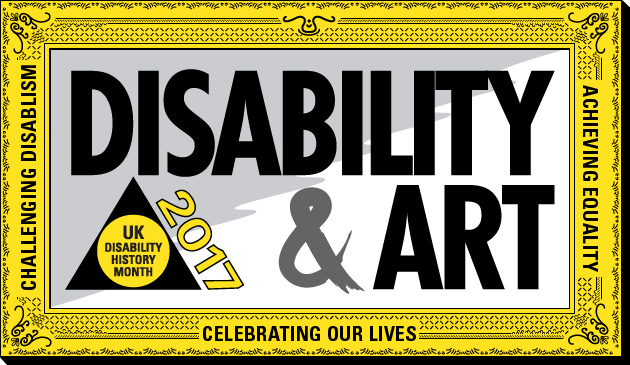So, it’s UK Disability History Month? I feel this is probably one of the lesser known history months!
What is it? Or perhaps the better question might be, why does it exist? As with most history months, it’s an attempt to generate a public focus on the history of equality and human rights with a specific focus on disability. Disabled peoples’ contributions and achievements are often overlooked or undervalued and disability history month provides a platform for changing these attitudes and showcasing success. The Month is in its 8th iteration this year and there has been a steady increase in interest and activity.
Disability History Month runs from 22nd November to 22nd December and covers the scope of HIV/AIDS Day (1st December), the International Day of People with Disabilities (3rd Dec.) and International Human Rights Day (10th December). It also follows on directly from Anti-Bullying Week (19th to 23rd November) which is an important parallel as it has been reported that up to 2.5 times as much bullying is recorded towards disabled as compared to non-disabled young people and that some 70-80% of young disabled people claim to have been bullied in school and college.
King’s is showing its support for Disability History Month and this year’s theme, art, by holding a breakfast short film screening. We have carefully selected a range of short films that feature people’s experiences of visible and invisible disabilities.
As we talk about History Month’s as a platform for social change, I would like to extend that to this blog and use this space to talk about the ethos we will be pursuing here at King’s, a lot of which is rooted in the principles of the social model of disability. The social model of disability proposes that people are disabled by the barriers imposed by society that preclude their participation in social life and the workplace. These barriers can be physical and attitudinal and by identifying and challenging them we can ensure full participation, to everyone’s benefit. Attitudes based on prejudice, stereotypes or ableism also affect disabled people and can act as a barrier to having equal opportunities to participate in society. The social model locates ‘disability’ in the way society is organised – that is, in its physical and attitudinal organisation, disables certain people. This is in contrast with medical model of disability which has faced criticism for classifying people as disabled because of their individual conditions or impairments.
Seeing disability through the social model allows us to see the benefits of removing impediments that restrict life choices for disabled people so that disabled people can be independent and equal in society, with choice and control over their own lives. The social model of disability was developed by people with disabilities, frustrated by the fact that a traditional medical model did not explain their personal experience of disability or progress more inclusive ways of living.
As employers and providers of education, we have clear moral and legal responsibilities for supporting staff and students with disabilities. The Equality Act 2010 makes very specific reference to what is required for universities and other public bodies, which entail making adjustments, as are reasonable, to avoid disadvantaging disabled colleagues and students, to allow them to participate in work and education to the same extent as their peers. This obligation applies to policies as well as physical features of our environment and the provision of information.
Alongside these specific legal requirements, we are also bound by Public Sector Equality Duty which I have discussed in previous blog posts. This requires universities to
Give due regard to the need to eliminate discrimination, harassment, victimisation
And
Advance equality of opportunity between persons who share a relevant protected characteristic and persons who do not share it
And to
Foster good relations between persons who share a relevant protected characteristic and persons who do not share it.
As an education provider and employer, we are expected to do this by removing disadvantages experienced by disabled people and encouraging participation where representation and engagement are disproportionately low.
Having worked in a number of contexts, government, third sector and now education, I have seen the benefits that inclusive workplace practices can bring. Dismantling barriers effectively and sensitively leads to a far more positive experience for individuals as well as a better functioning, dynamic and productive organisation.
King’s has just completed its first organisation-wide baselining exercise, a self-assessment on our disability support and provision, with our partners the Business Disability forums. We are now analysing the results to see what we are already doing well and where we can improve. This assessment is a really great way to celebrate Disability History Month as it shows a firm organisational commitment and will lead us to tangible action and improvement for all staff. Focusing on our working environment, and developing tools and practices in linen with best practice shows that improving the accessibility overall has benefits everyone – whether currently impaired or not and enables those with impairments to give their best.
That is the crux of our legal responsibilities and of the social model – to recognise and change our thinking (and doing) around our physical and social environment and remove the barriers that these create, rather than narrowing in on the impairments on individuals.

Important points, often overlooked, very well expressed, beautifully written! Food for thought.